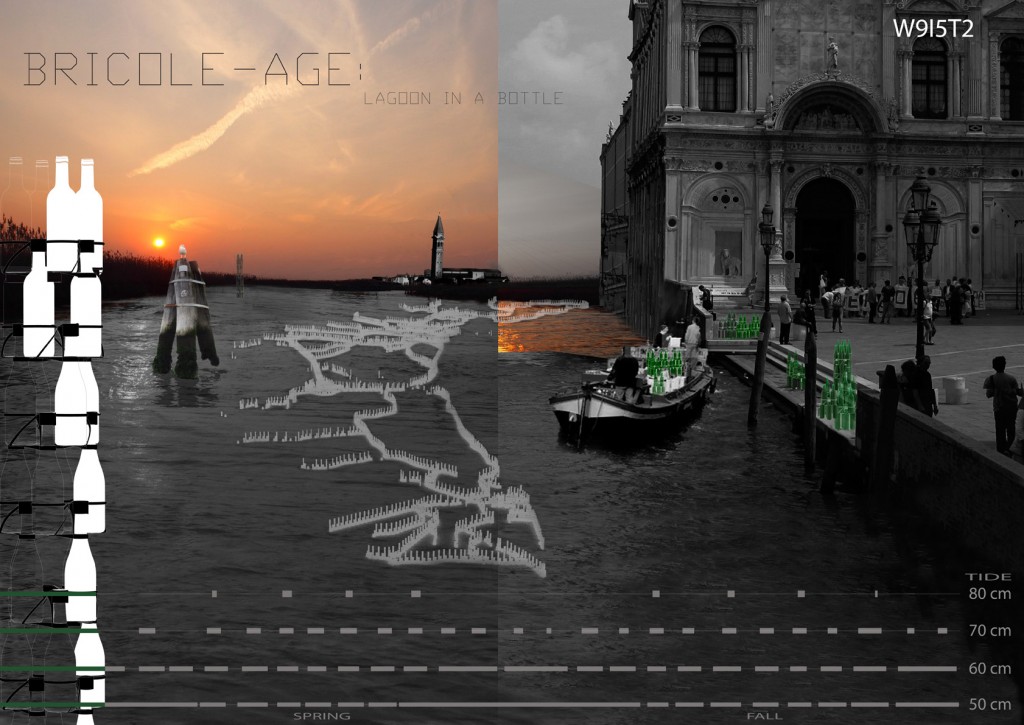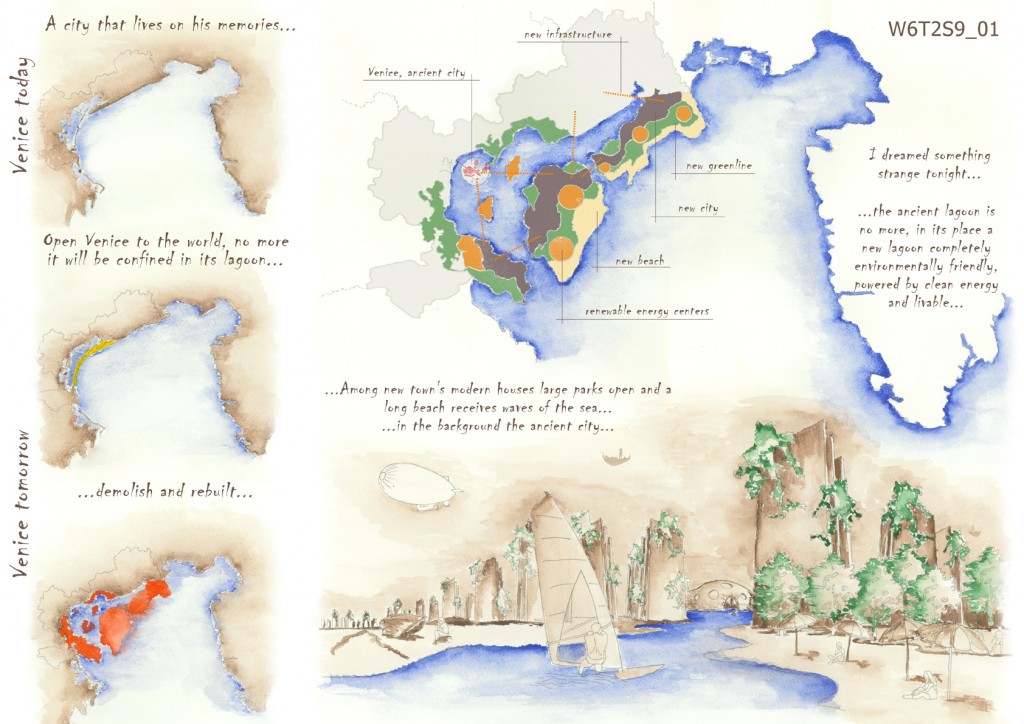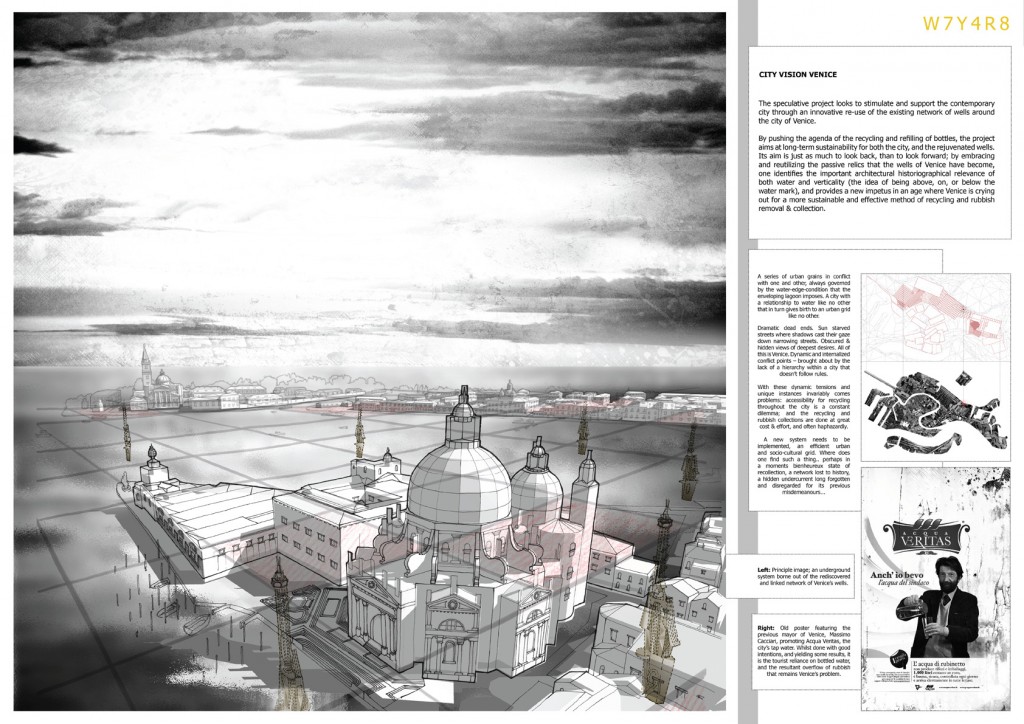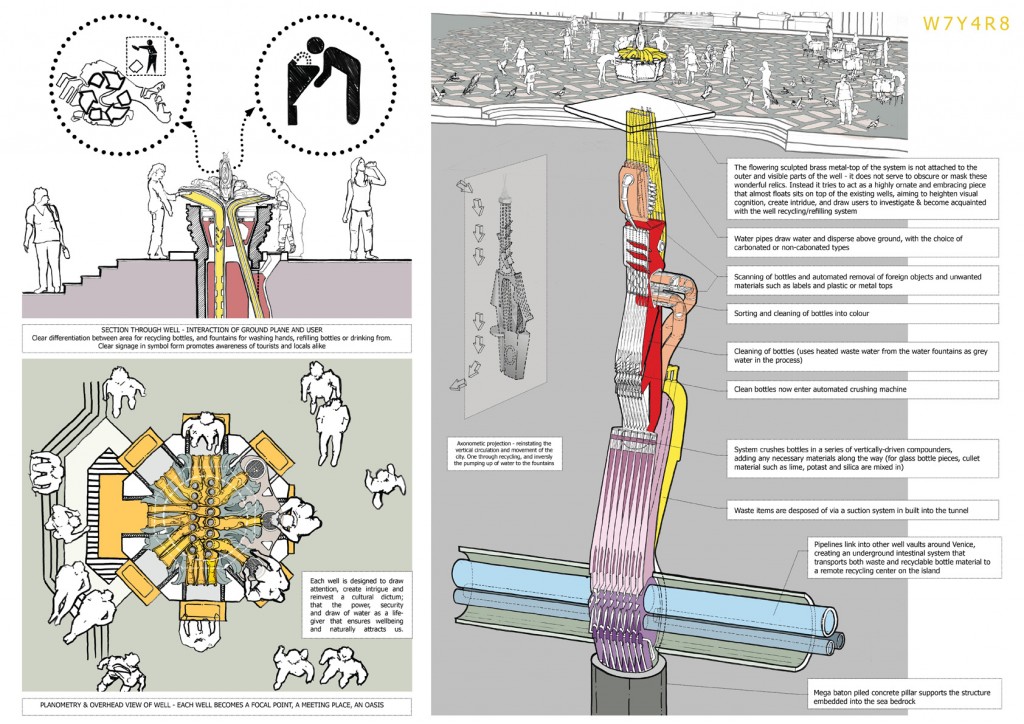Info:
Title: VENICE - Code: W7Y4R8Contest: Venice / 2011
By: H. Godfrey
Views: 5875 Likes: 0
Votes:
BJARKE INGELS4 NERI OXMAN6 ELENA MANFERDINI3 MARIA LUDOVICA TRAMONTIN6 BOSTJAN VUGA75.2
VENICE
Italy is one of the largest consumers of bottled water in the world. In excess of 20 million tourists visit Venice alone every year, consuming an estimated thirteen million bottles of water, in addition to those consumed by its thousands of inhabitants. It is well documented that tourists tend to be suspicious of tap water, exacerbated by the public water fountains themselves being unmarked, old and corroded. In fact, tap water in Italy is strictly controlled and Venetian water comes from the same sources as some bottled waters.
Further to the colossal environmental impact, the disposal of all those plastic bottles is a huge cost to the local economy. Collection is inefficient given the nature of Venice’s conflicting and almost labyrinthine urban grid, as well as the lack of motorised transport, resulting in massive costs – waste disposal costs almost €250 per ton in Venice compared with €65 per ton on the mainland.
Within Venice there lies a forgotten network. Within every major square, harbouring in a state of dormancy, there lies an idle relic; seen but passive in nature. Once a focal point, and a symbol of the city’s eternal relationship with water. This project considers the architectural element of the well, and the urban scale of Venice’s well system, as a potential gateway to urban rejuvenation and sustainability.
The projects looks to stimulate and support the contemporary city through an innovative re-use of the existing network of wells around the city of Venice. By pushing the agenda of recycling and refilling of bottles, the project aims at long-term sustainability for both the city, and the rejuvenated wells. It’s aim is just as much to look back, than to look forward; by embracing and reutilizing the passive relics that the wells of Venice have become, one identifies the important architectural historiographical relevance of both water and verticality (the idea of being above, on, or below the water mark), and provides a new impetus in an age where Venice is crying out for a more sustainable and effective method of recycling and rubbish removal & collection.
The rejuvenated well points within Venice aim to focus as a dual process,
-Promote publicity about the public water fountains through iconic and eye-catching hub that serves as a clear focal point for recycling and refilling water bottles.
-To begin to redress the problem in the balance and reliance on bottled tap water across the island.
The first point is a direct development in the previous mayor’s implemented scheme to promote Venice’s tap water, known as ‘Acqua Veritas’. A fully automated system will dictate the release of water through pressurised release valves at each well, rather than a continuous flow of water – something that currently adds to the impression that the tap water of Venice is not quality drinking water.
The second point builds on the vast sector who are not using tap water directly, tourists. It aims to provide a localised, clean & concealed network of recycle points for glass & plastic bottles to be recycled from, both by residents and tourists.
Residents currently dump all their rubbish outside their homes ready for collection. This invariably builds up and as well as creating unsanitary conditions & an eyesore, the whole recycle scheme is done by foot, at great cost and energy. Thus the well recycling system is predicated on the need for a more efficient system; one that to begin with, will alleviate and lift the pressure of recycling collections, and perhaps, once the infrastructure is in place, completely replace manual recycling collections with an automated system, hidden in the lost intestines of Venice’s well network.
An urban proposal initially looks into the collection and recycling of glass and plastic bottles within Venice, with a view to slowly eradicating the usage and disposal of plastic bottles around Venice over time. Tourists are stuck in their ways, and as is common, the routine of buying a plastic bottle of water abroad is a hard habit to kick. Coercion must be applied. This is where Venice must develop a new trend via the introduction of reusable non-plastic flasks (as has been implemented in other Italian towns. It is hoped that this proposal could encourage Venice to make use of its insular nature, by becoming a remote island ecology. Only selling and stocking the glass (or other more environmentally friendly material) flasks, each with an identifiable code for scanning and recycling.
In terms of the extreme and further fantastical future, the project provides the infrastructure for the creation of this aforementioned highly sustainable remote island ecology, where the circulation of plastic bottles eventually ceases. Then the system can be altered for all refuse waste, and again provide circulation to remote compactors and recycling centers. The structural essence of the well recycling system – essentially a series of pillars dotted around Venice – also poses the potential for further underground development. The potential for a mega-structure one cannot as yet envisage, one that is able to support the island of Venice, and finally stop the city sinking once and for all.
Info:
Title: VENICE
Time: 6 giugno 2011
Category: Venice
Views: 5875 Likes: 0
Tags: Bottled water , Fountain , Godfrey , Italy , Plastic bottle , Recycling , Tap water , Venice , Waste









